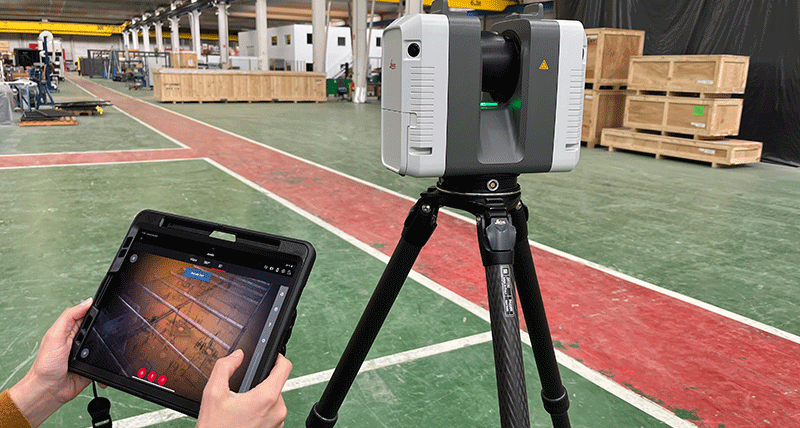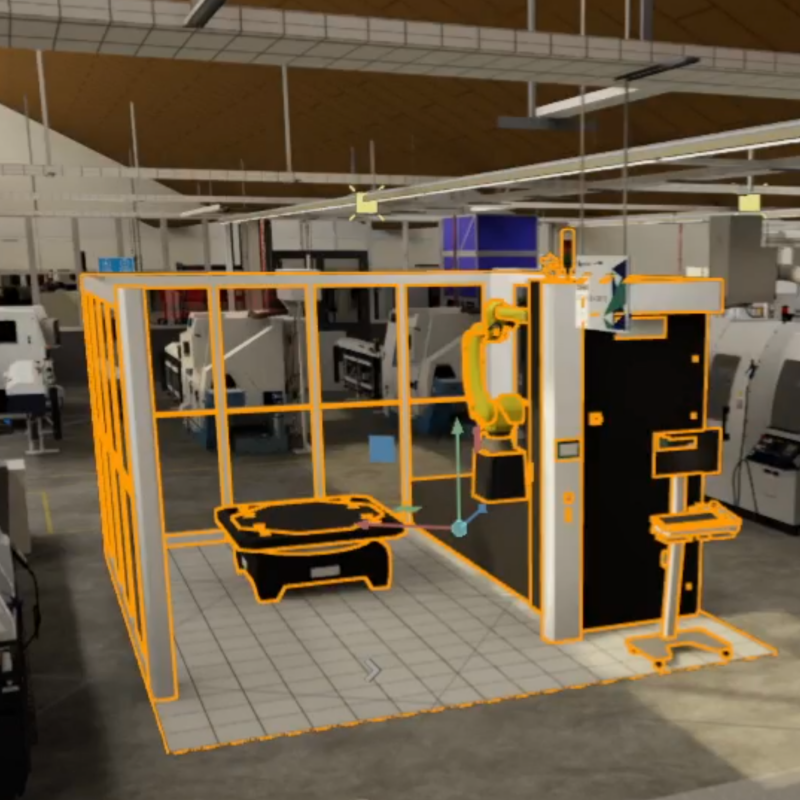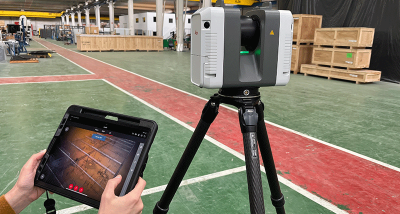Hexagon’s Manufacturing Intelligence division last month announced the global “as-a-service” roll-out of its Digital Factory solution. Digital Factory-as-a-service deploys a team of Hexagon scanning experts to manufacturers worldwide to capture highly accurate up-to-date information about their plants and equipment. This process identifies needs, defines workflows for collecting data, and delivers BIM models and custom services to help leverage and analyze the full potential of the factory data.
The service provides the manufacturing industry easy access to the information required to remodel assembly workflows, increase automation, install more advanced equipment, and maintain the agility required to stay ahead of competition. The business problem it solves comes down to a simple problem: Most teams don’t have plans, and especially not up-to-date plans. In the current manufacturing environment, the lack of good information has become acute, so they cannot make informed decisions, such as planning for new machines or equipment.
Manufacturing customers usually have multiple sites they want to be able to visit remotely to check build progress or troubleshoot issues with their local team or system integrator. The applications are varied, but the underlying need is constant, which is why Hexagon created a scalable offering, from scanning into a cloud-hosted 3D visualization with some basic training to global multi-site scanning and BIM modelling. In practice, the service or project will be tailored to what they need utilizing Hexagon’s skills, know-how, and scanning and software technologies.
The service is custom, explains Benjamin Outrey from Hexagon’s Manufacturing Intelligence division. This means it’s not only the technology, but the consultancy, scanning, data processing, training.
“Our manufacturing customers don’t have the expertise or the technology, so it’s quite different to talking to someone that already does scanning or consumes that data," he said. "Digital Factory customers prefer to continue focusing on their main business and they leverage our expertise to digitalize their facilities. We are lucky that we have very mature and innovative scanners and software, and with Digital Factory, we are harnessing it and tailoring it to solve manufacturing problems.”
The company recommends at least one update per year as a way for them to “sleep well,” but it depends how quickly things are moving. Some plants change every week, some every few years. From a technology standpoint, Hexagon can provide the data for them to manage, or provide cloud data visualization, collaboration, and analysis through Reality Cloud Studio, powered by HxDR as part of their subscription.
Digital Factory has been available for some time, but not as a service offering. This makes it an important communication tool for customers, says Outrey.

“A lot of our customers need to discuss and present their plans to other stakeholders, and 3D visualization gives them a new way to do this without needing to become an expert in reading 2D plans or creating 3D CAD. Now they can easily capture that information, and share their proposal with diverse stakeholders in a way anyone can instantly interpret, through an accurate dataset that can be relied upon to go as granular as required in subsequent discussions.”
“What’s very important about our Digital Factory offerings is that we are speaking manufacturing with manufacturing people. We understand their problems and are usually already working with them as a manufacturing technology provider. In this way, we can apply the best expertise and technologies to give them the factory intelligence they need to move forward.”
It’s important to offer a global service because it’s what global Hexagon customers expect, according to Outrey. “Our larger manufacturing OEM or tier one customers have many sites, and we can support them across 30-40 countries through a single point of contact, working with trusted partners. Hexagon’s partnership ecosystem comprises a network of companies worldwide that are trusted experts and can utilize our powerful portfolio of manual and automated scanning technologies to digitalize factories worldwide.”
In Europe, Hexagon sees a lot of brownfield sites being reconfigured to find operational efficiencies and rethink 20- or 30-year-old manufacturing processes and operating models. In China, there’s a lot of demand to plan and oversee new plants, but also to plan the transformation of legacy plants that were built for lower value and labor-intensive manufacturing.
Globally, aerospace is one of Hexagon’s biggest markets, where it touches 95 percent of aircraft produced in some form. It’s under immense pressure to increase output, with demand pushing global aircraft production to increase by 20 percent per year until 2027.
“They have hard choices: employ more people, use more robots, digitalize more processes, and they need to make their brownfield sites work more efficiently," Outrey explained. "In automotive, they are seeking more flexible processes and investing in more advanced robots and quality inspection systems that speed up time to market. Many have no up-to-date 2D plans, let alone reliable 3D data with which to plan and oversee modernization.”
Hexagon has a huge project underway with a global aerospace manufacturer to standardize site plans across all their sites so they can review their global footprint and how to use it best to ramp up large-scale manufacturing. That data is the foundation for planning and transformation. In another project, an automotive manufacturer is using Digital Factory services to monitor changes to remote sites and a new JV assembly line under construction.
“At a more granular level, we have two sets of customers that are planning for the use of new equipment: those that are modifying production with new robots, 3D printers (in aerospace) or materials handling systems themselves, and our Hexagon customers who are planning to install our large PRESTO automated quality inspection systems," Outrey said. "Here, it’s great to be able to recommend Digital Factory to plan capacity, layout, and installation suitability. Digital Factory can be easily connected with other data sources such as Asset Management systems, but we see the scanning as the foundation for more advanced applications and for most, these smart factory applications are the next step.”






